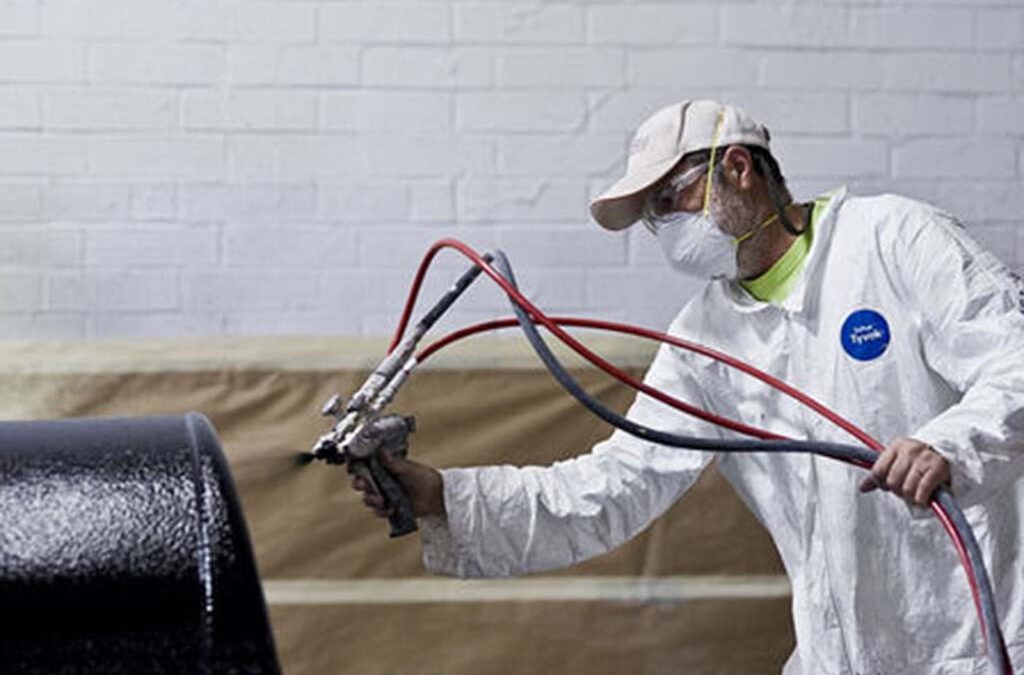EonCoat Performance Coating is a corrosion-resistant ceramic coating that can actually flex with steel. Ideal for both hot and cold weather applications. EonCoat ceramic coating is a water-based, two-part spray coating that forms a dense, protective ceramic in minutes. It provides corrosion-resistant protection beyond what has been available in the market because, unlike other coatings, EonCoat does not simply sit on top of the substrate.
An exothermic reaction bonds EonCoat to the top layer of the substrate, forming an impenetrable coating. And unlike other ceramics that are brittle, EonCoat ceramics are ductile (that is, flexible), so they can bend with coated steel. This flexibility, combined with its protective qualities, makes EonCoat a revolutionary technological advancement in coatings.
For use in hundreds of high-performance industrial, OEM, and architectural applications and designed to perform under extreme conditions EonCoat is used as:
- Corrosion Resistant Coating
- Abrasion Resistant Coating
- Chemical Resistant Coating
- Fire Retardant Coating
- EonCoat is incredibly easy to apply and has many great benefits, a few of which include:
- 5X more Corrosion Resistant than leading coatings
- Excellent Abrasion Resistance
- Fast return to service (usually within 1 hour)
- No VOCs, No HAPs, No Odors
- 0% Flame Spread
- Build to Any Thickness
EonCoat is applied in a two-part spray that dries instantly, ensures there is no overspray problem, and a fast return to service of equipment is possible. Apply EonCoat to cold or hot surfaces from 50°F (10°C) to 120°F (48°C). The stable surface is essentially permanent and usually removed by heavy grinding.
EonCoat coatings last longer than polymer coatings
EonCoat is completely inorganic and lasts the way other inorganic things, like rocks, last. There are no carbon chains to break down so it cannot corrode. Before EonCoat nearly all coatings were organic “polymers,” which comes from the Greek words, poly (meaning many) and meros (meaning parts).
Polymers are chains of many parts that are all the same linked together by a backbone. The backbone of organic polymers is carbon atoms. Polymers, long chains of carbon atoms with various things attached at different points to the carbon atom, break down with time and heat. For example, breaking down the carbon chains is the way we make gasoline from crude oil. We break down, or crack, the carbon chains.
Exposure to heat, sunlight and the passage of time causes all carbon chains and thus all polymers, including polymer paints and coatings, to break down. Because EonCoat is inorganic and has no carbon chains it doesn’t break down, and lasts longer than polymer coatings.
EonCoat Flexible Ceramics
Flexible Ceramics may seem like an oxymoron: everyone knows ceramics are brittle. But EonCoat is a ceramic that has all of the benefits of a ceramic coating and yet can flex with a metal substrate, up to and beyond the point where steel permanently deforms.
19% Ductility Makes EonCoat Ideal for Steel with Flextural Loads.
EonCoat ceramics have more flexibility (or ductility) than is needed to handle the typical movements of steel – including flexing, expansion, and contraction – found in:
- Bridges
- Storage tanks
- Exteriors
- Concrete structures and so on…
Ordinary fired ceramics are brittle; they have less than 1% ductility. Various steels will demonstrate 7% to 38% ductility before failure and 1% before permanent deformation. Because steel can flex and ceramics can’t (until now), using a true ceramic coating on steel would not be practical. Previously, so called ceramic coatings for steel have just been polymer coatings filled with ceramic beads.
Independent tests done by Dwight Weldon of Weldon Labs (author of the book “Failure Analysis of Paints and Coatings”), show that EonCoat sretches 19% prior to failure, more than enough to handle the ordinary movements of steel.
How EonCoat Corrosion Resistant Ceramics Flex
EonCoat ceramics have fibers and fillers with an acicular structure to create toughness and additional ductility (flexibility). This isn’t possible with traditional ceramics because fibers cannot withstand their firing. But the EonCoat exothermic reaction creates a heat rise of only 7° (4°) to 40°F (22°C), so a wide range of materials can be used for performance enhancement.
EonCoat coatings also have very good impact resistance:
- 26-28 inch pounds (EonCoat standard coating)
- EonCoat coatings can take a significant blow without showing damage.

